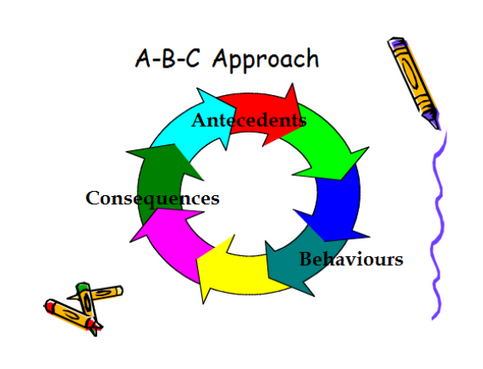Book: Changes in Behaviour
| Site: | Dementia Family Carer E-Learning Courses |
| Course: | Home Based Care - Home Based Education Demo 2021 |
| Book: | Book: Changes in Behaviour |
| Printed by: | Guest user |
| Date: | Tuesday, 17 June 2025, 6:15 AM |
1. Introduction
In this topic we will look at how you as the carer can respond appropriately to sudden changes in the behaviour of your loved one with dementia. We will also explore the links between communication and behaviour patterns.
The Learning Outcomes of this topic of the course are to:
- Discuss the factors that influence behaviour
- Discuss how a change in behaviour is closely linked with communication needs
- Identify techniques to recognise, prevent and respond to changes in behaviour in a positive way
- Discuss the impact the environment has on the well being of an individual with dementia
You should be able to work your way through this topic in approximately 70 minutes.
The Activities - Forums, Video Tutorial and the Care Delivery Action Plan - will require additional time.
2. What are Responsive Behaviours?
Changes in behaviour which are out of character are often called Responsive Behaviours. They are behaviours that challenge us as carers. Responsive Behaviours are behaviours that we find "tough", "testing", "taxing" or "emotionally draining" to deal with.
It is important to remember that these Responsive Behaviours may not pose a problem for the person with dementia - it is very likely that the person with dementia is not intentionally trying to challenge you the carer.
Video available at: https://youtu.be/R97cuD97oXA
Now, let's look at the different manifestations of responsive behaviours.
3. Types of Responsive Behaviour
Movement Related Agitation includes:
- Walking aimlessly - includes Pacing; Trailing; Restlessness; Repetitive Actions; Dressing / undressing and sleep disturbance
- Aggression - includes aggressive resistance; physical aggression; verbal aggression
- Apathy - includes being withdrawn; showing lack of interest and amotivation (inability or unwillingness to participate in normal social situations
- Depression - includes being sad; tearful; hopeless; low self-esteem; anxiety and guilt
Have you noticed changes in behaviour of the loved one to whom you provide care? Can you give us some examples of responsive behaviour you have noticed ?
Tell us about it in the Changes in behaviour forum.
4. Pause and Reflect
We have taken quite a detailed look at Responsive Behaviours.
Has your loved one with dementia exhibited any of the types we outlined above?
Remember, this may well depend on what stage your loved one is in their dementia.
The longer your loved one has dementia, the more likely it is they will exhibit responsive behaviours.
Can you give us some examples of responsive behaviour you have noticed ?
If you haven't already done so, could you tell us about it in this week's Changes in behaviour forum.
5. What causes responsive behaviours?
Changes in behaviour can be caused by a number of factors. These include, but are not limited to:
- difficulties in communicating effectively
- physical pain such as headache
- ongoing stress or frustration
- concurrent physical problems such as constipation, side effects to medications, infections or sensory impairments.
More details can be found in the video presentation below:
This video is available to view at https://youtu.be/p2X5FHGehpw
6. Assessing Behaviour
Gathering information on behaviour helps us understand what is really happening and why.
This relies on accurate assessment of behaviour. Improving our understanding of the person with dementia and their behaviour will allow us to find solutions that may prevent or reduce responsive behaviours.
There are some key questions we need to consider when we are assessing your loved one's given behaviour at a particular time. These include -
What is happening exactly?
Is what is happening effecting the person with dementia's wellbeing?
Who else is effected?
Is there a safety risk?
7. Gathering Information
The A-B-C Approach - use this approach to gather information around changes in behaviours.
Antecedents - What was happening? What was your loved one doing? Were there any noises? Where were they? Who else was there?
Behaviours - What did your loved one do? Describe their behaviour. How were they - distressed, angry, frustrated etc?
Consequences - Check out Reactions: What did your loved one do next? How did others respond to their behaviour? How did your loved one react to other people's response? What happened after the behaviour occurred?

Click on How to use the A-B-C chart for more details on how it can help you gather information.
8. Tracking Behaviour
You might like to track the behaviour of your loved one by using our downlaodable diary. Just click on the Diary Below, and save it to your computer. You can then print it out and complete it.
You may recognise various patterns of behaviour. These could be associated with particular activities or conditions. By keeping a diary you may be able to recognise more clearly the 'triggers' that can lead to various behaviours. Once you know the particular triggers, you can work towards prevention or managing responsive behaviours more effectively.
Download the Carer's Diary to keep track of when and how changes in behaviour manifest themselves.
9. Summary
In this book we have looked at responsive behaviours - the various types, causes and some strategies on how to manage them.
Earlier this week, we also looked at communication.
We hope the materials have been useful for you.
You might like to try to apply key learning points to your caring situation in Week 5: Care Delivery Action Plan. Remember, this is an optional activity, but you might find it useful to crystalise your thoughts for the week.
Again, we would be delighted if you provided us with some Feedback: Week 5.
Many thanks in advance.